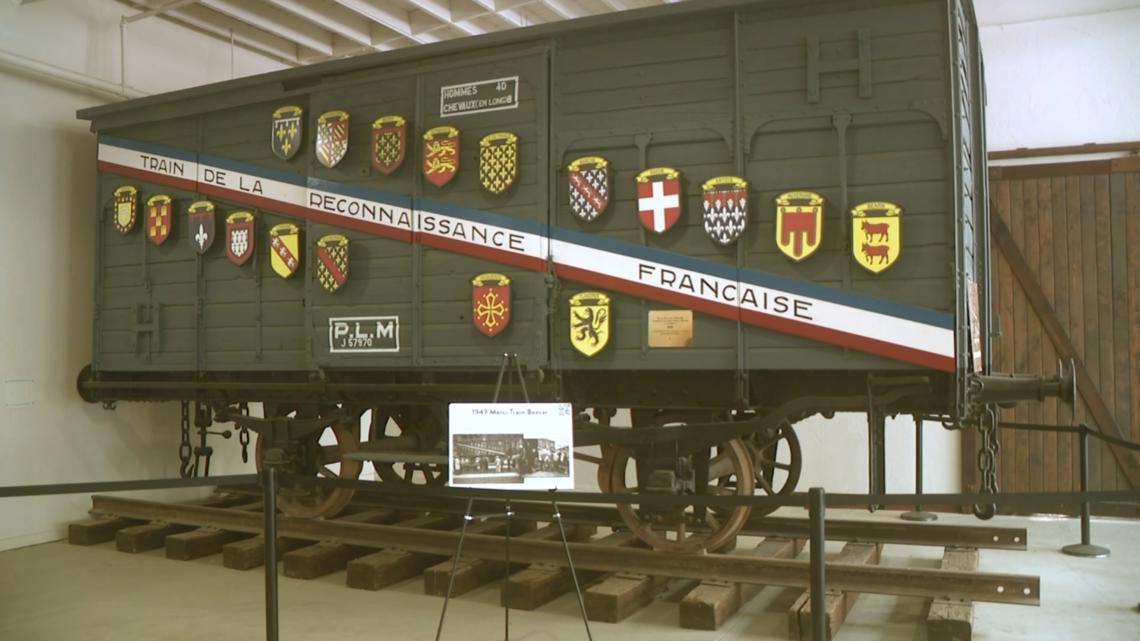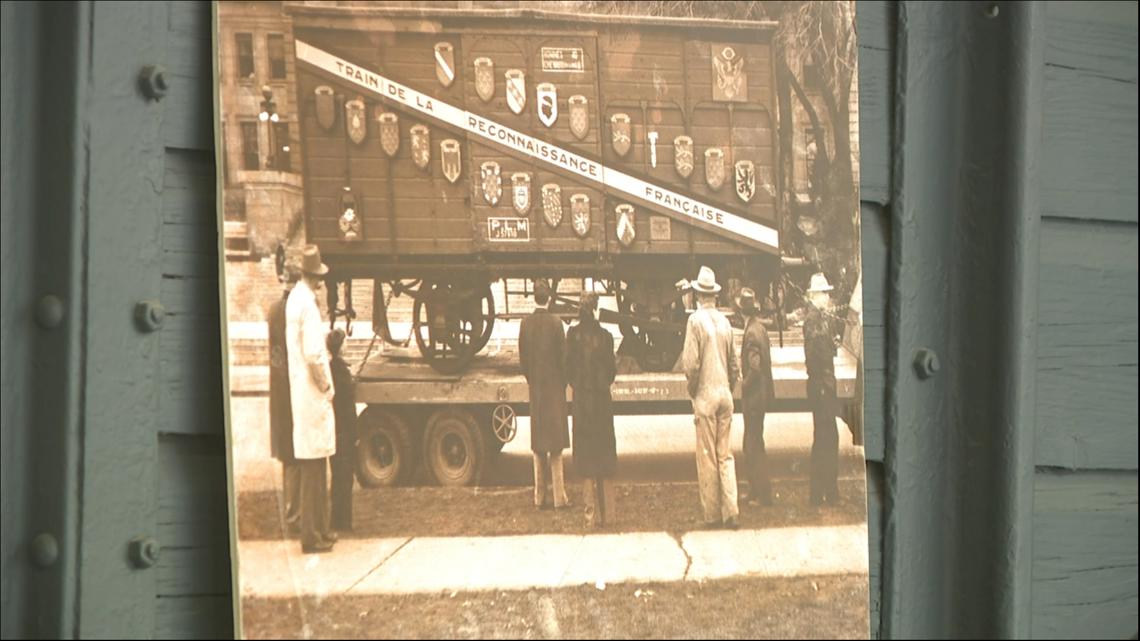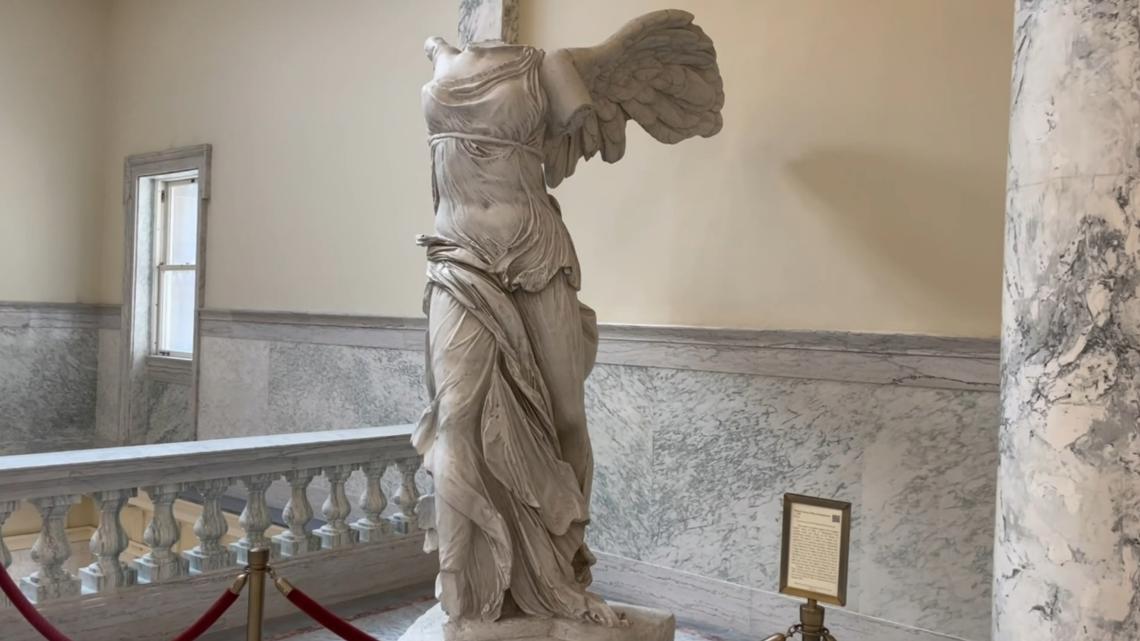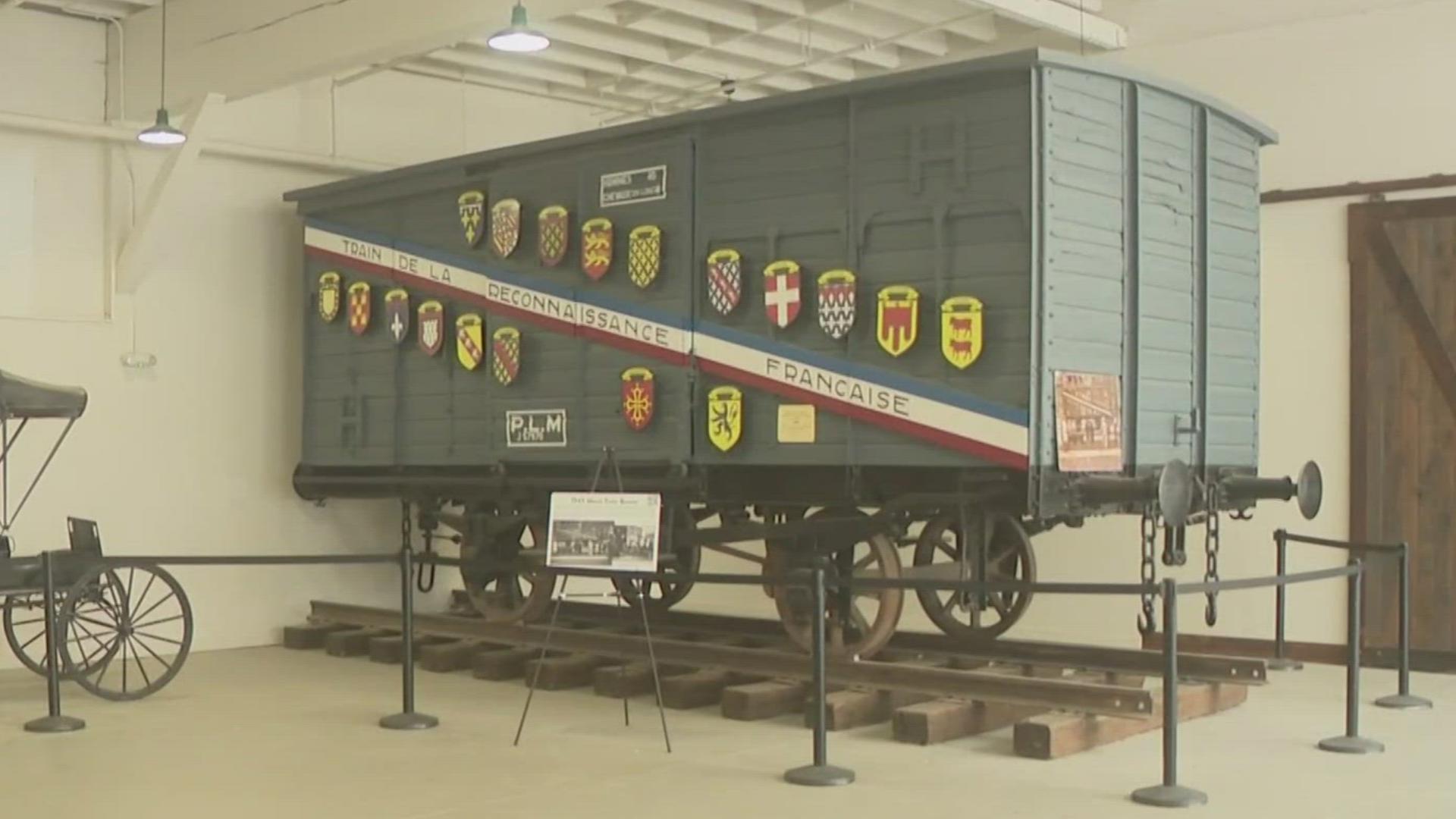BOISE, Idaho — The camaraderie between France and the United States has been in existence for hundreds of years.
In 1884, France sent the United States a gift, the Statue of Liberty, as a commemoration of America's 100th anniversary of independence.
After both World Wars, France was left devastated.
In 1947, a few years after the war ended, the American people wanted to help.
"A famous reporter named Drew Pearson really spearheaded the effort, which caught fire basically, and resulted in sort of a supply train that they refer to as the (Friendship) Train," said Irv Tyrrell, Ret. Air Force Captain and member of the 40 and 8 Society.
Americans from coast to coast signed on. They gathered food, clothing and medicine to send to the people of France. The goal was to send 12 boxcars full of goods.
"That started in Los Angeles," Tyrrell said. "The idea was it was going to go across America and see if they can load those 12 boxcars by the time they get to New York Harbor."
Tyrrell said the journey to get to New York Harbor took 11 days. By then, they had collected more than 700 boxcars full of goods.
"The French people were blown away by that effort when they got all the supplies," he said. "And so they wanted to say thank you to all Americans for that effort and they came up with a train of their own, that they called the Merci Train, or the thank you train."


They decided to send over gifts in boxcars used during World War I.
"The French used (those) boxcars to transport the soldiers to the front lines," Tyrrell said. "In our case, Americans in the boxcars would hold 40 soldiers or eight horses, just not at the same time."
Those boxcars were referred to as "40 and 8."
"It's hard to imagine 40 soldiers with all their equipment in that relatively small boxcar," Tyrrell said. "I'm sure they looked out for each other. When they needed a break, they made room."
Tyrrell said France spent about a year refurbishing 49 cars, one for each state and one split between the District of Columbia and the Territory of Hawaii.
All 49 cars were shipped to New York Harbor in early 1949, and then dispersed to each state.
Idaho received its "Merci Train" boxcar on Feb. 22, 1949.
"I understand from Jane Sweetland's book, it was quite a big fanfare, and a parade that ended at the state capitol," Tyrrell said.


The car was decorated with a French flag painted diagonally across the sides, that says "Train de la deconnaissance Francaise," with colorful shields all over.
"The medieval shields are the provinces of France. They've kept those shields ever since the Middle Ages," said Ret. Lt Col Karl Wheeler, a member of the 40 and 8 Society. "It's a symbol of that province, and they're very proud of their symbols."
Inside the 40 and 8 car, personal items of varying degrees: things like plates, military medals, even wedding dresses.
"They had given away what they had," Wheeler said. "I think it was very generous as a French people to do that, to offer America the gifts for helping in both world wars."
Also inside Idaho's boxcar was an 11-foot statue, a replica of the Winged Victory Nike, just like the one inside the Louvre Museum in Paris.
Today, it stands proudly on the fourth floor of the Idaho Statehouse.


"A lot of people are really touched by the significance of our troops being in the boxcar. And then it being used again, as a thank-you for our civilian effort to get supplies over to the people of France and Italy, they're really touched by that," Tyrrell said. "And to find out that we started with 12 boxcars, and ended up with 700, you know, brings people to tears."
Of the 49 Merci Train boxcars sent over in 1949, 43 are still in existence, including Idaho's.
For years, it was displayed outdoors at parks and other spots around Boise.
The boxcar was used as a feed trough for horses at the National Guard Armory for some time. In the 1960s and 70s, it was displayed near downtown Boise, but was repeatedly vandalized.
"Eventually, over the decades, got in poor condition being outdoors," Tyrrell said. "So, the Historical Society took charge."
It's currently at the Old Idaho State Penitentiary, inside the old shirt factory. Wheeler said they've got a grant and are working to get it back to what it looked like when it arrived in 1949.
If you're interested in visiting the exhibit, it is viewable during business hours by appointment. For more information, you can call (208) 334-2844.

